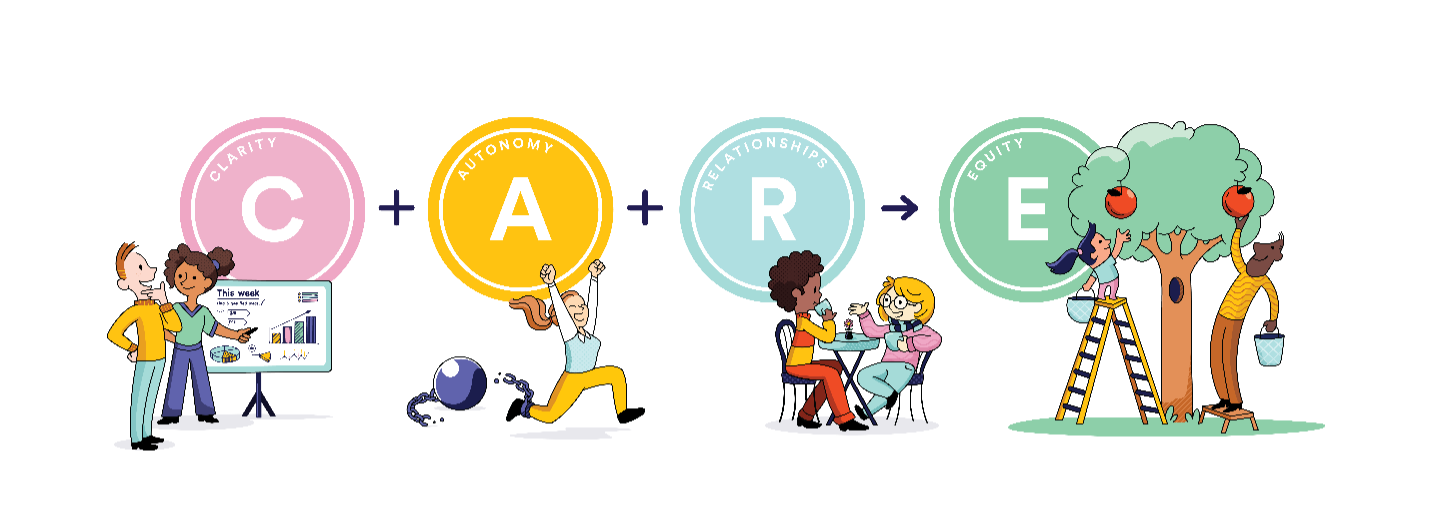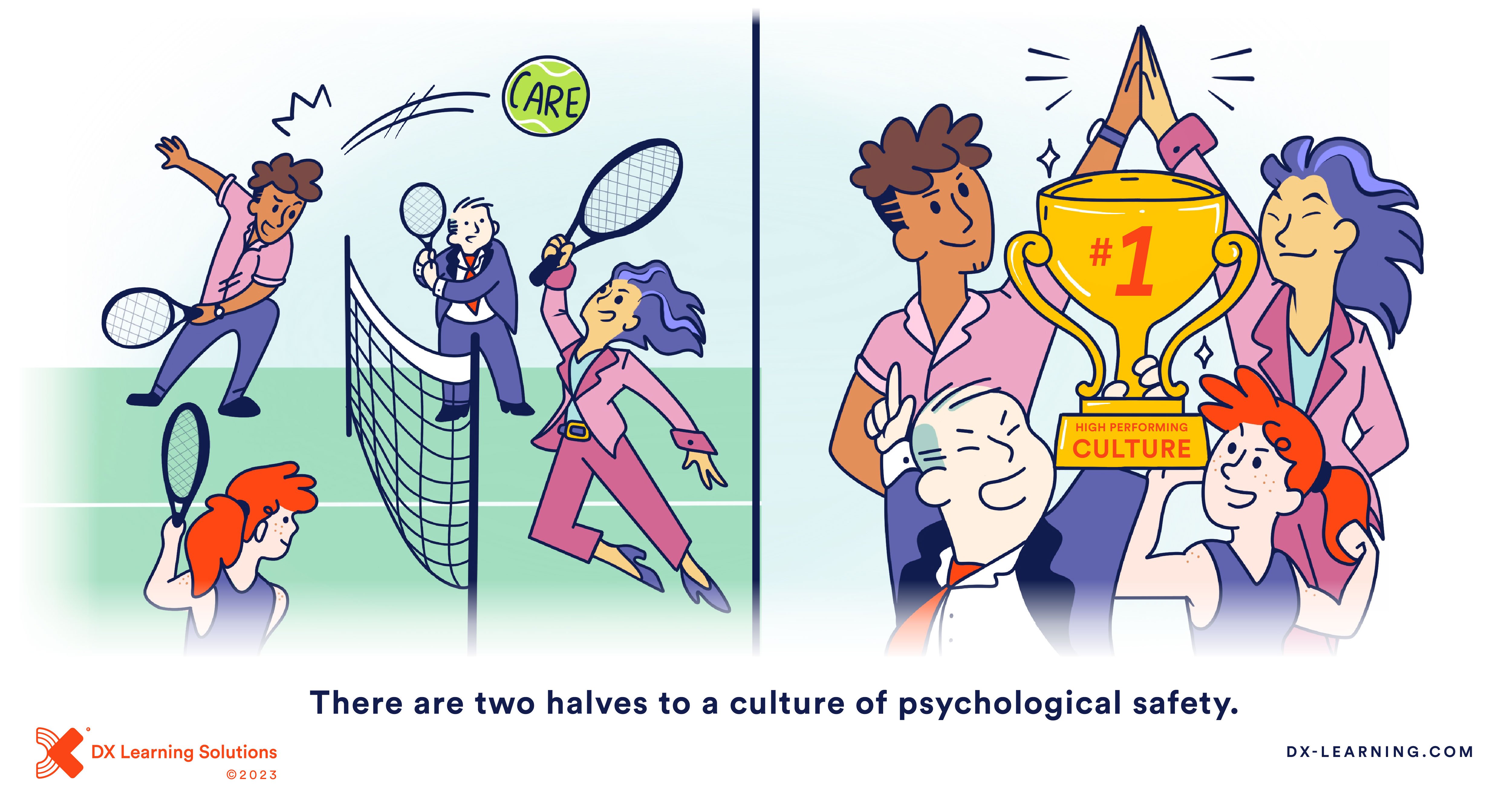A Comprehensive Guide to Organizational Culture in Times of Rapid Change

Remember that boss who was way more focused on hitting numbers or reading out reports than speaking to you like a real human? In the command-and-control cultures that are still prevalent now and for the foreseeable future, we hire, promote, and treasure IQ.
Thing is, AI has a way higher IQ than a human! It can work faster and answer questions on strategy, finance, marketing, or sales in seconds. It’s about to change the culture and leadership landscape forever.
So how do we maximise our human value once machines rule the world? Just kidding, but how can corporate leadership solutions pave the way to a more human future? Will we even need leaders at all...?
Understanding the Need for Organizational Culture During Rapid Periods of Change
…YES! Future teams won't need the boss to be the source of information and data. People need and want people-first humans. And we have a really long way to go.
Culture is what the young look for. The questions they’re asking in interviews? They’re culture questions. Rapid change is upon us. In the world of AI and tech, we need to be more human. We need to focus on human-centred values and skills when it comes to leadership in change management.
Too much of limited corporate leadership training budgets is spent on IQ development. It doesn’t leave a lot left for the EQ stuff, especially at the frontline, where it’s needed most. These managers already have high IQ! And they are leading high IQ people. About 58% of job success is attributed to emotional intelligence (TalentSmartEQ). We need EQ skills to get the most out of them.
Technological innovations, shifts in market dynamics, evolving consumer behaviors – change is reverberating through the halls of every organization, of every size, in every industry. It’s the only constant. But only 25% of companies have employees who say managing change in organizations is a major strength of senior leaders. (WTW).
Culture is essential to the successful use of AI. 80% of employees experience “cultural tensions” or competing priorities they don’t know how to balance in times of change. (Gartner). Periods of change thrust leaders and employees on an emotional rollercoaster, with high highs and low lows. Corporate leadership solutions empower leaders to provide stability, by being attuned to the human element – all the anxieties, resistances, and aspirations that can bubble to the surface.
Teams need their boss to do what AI cannot do. To care. Sure, Amazon’s Alexa and Apple’s Siri can recognize and respond to emotional cues in users’ voices, but they can’t comprehend the complexity of human emotion or respond with empathy or compassion.

They can’t support teams through stress, disappointment, burnout, or fear. They have no point of reference for how it feels to struggle with your mental health. AI doesn't and won’t ever care about that. Humans do, or they should do! Leadership in change management will be about nurturing that human connection.
Even one bad EQ apple in the office can rot away morale in those around them. On the other hand, companies that emphasize EQ experience higher levels of productivity and employee engagement than those that under-invest in or ignore it (HBR & Four Seasons). Employees with EQ bosses are 4x less likely to leave their job, too (Gallup).
Corporate Leadership Solutions for Today’s Challenges
It is EQ that is the key to managing change in organizations. BUT emotional intelligence decreases with job title, from frontline employees through supervisory levels to CEOs (Forbes). And 75% of careers derail for reasons relating to emotional competencies (CCL).
These human skills (formerly we used the word soft, but there is nothing soft about leading humans) leadership skills aren't innate; they need to be cultivated and honed through corporate leadership solutions.
The CARE Experience provides leaders and their teams with the human skills to get the hard stuff done in the non-human technology revolution – to create clarity, give autonomy, build relationships, and ensure equity. They’re the essential leadership skills that got us through the pandemic and they’re the ones that will get us through all future changes.

DX's suite of customized corporate leadership solutions, including CARE, provides an unbiased language of effective leadership for managers to understand and talk about strengths, weaknesses, and human behaviors. It’s a structured approach to enhancing EQ.
DX's emphasis on the integration of leadership development with strategic change management ensures that transformations aren’t imposed but embraced, driven by empowered leaders at every level, fostering innovation, collaboration, and adaptability across diverse teams. It turns on engagement like a light switch in every mind.
Key Components of Effective Leadership Strategies for Change
Building Resilience and Flexibility in Leadership
You can’t over-use rational and logic-based decision-making to guide change management. When emotions are running high, sustaining motivation and flagging roadblocks early on is critical – or else you’re looking at long-term damage.
Effective leadership strategies teach managers how to use their EQ to connect in the right way with the right information at the right time. So they are flexible to the people and situations that arise around them, what’s being felt, said, or not said, and can use that insight and understanding to guide decision-making.
Fostering a Culture of Continuous Learning and Adaptation
Adaptability should be celebrated as a core value. Our brains should be like a lump of clay that we’re continually reworking, not just glazing once and leaving on a shelf to gather dust.
It’s like Bruce Lee said: ‘Be like water.’ It’s about broadening perspectives, seeing alternatives, persisting through challenges, and responding constructively to criticism and failure.
Effective leadership strategies cultivate an environment where growth is not just encouraged but expected. Where experimentation becomes the norm, and everything becomes a curious and creative process of figuring out what’s working and what’s not. It’s a commitment to never settling, pushing boundaries, and actively seeking out new knowledge and experiences every day. Now that’s a competitive edge!
Creating a Culture of Psychological Safety
Communication around managing change in organizations needs to be a two-way street. Not just speaking but also listening – to words, body language, and even silence. Leadership development programs can train leaders in how to create a culture of care, where people feel safe to share those thoughts, feelings and ideas. Safe to be themselves.
Creating an open feedback loop helps leaders challenge biases, identify areas for improvement, and refine those human skills over time, through consistent, respectful actions. This psychological safety spurs meaningful dialogues. Ideas are exchanged, concerns are addressed, and solutions are co-created.
High-performing teams need high-performing leaders who intentionally care for their teams. High-performing leaders need high-performing teams who speak up early and often about what is working and what is not.

Case Studies of Successful Change Management
The Oncology Institute reinforced and modelled their culture on CARE. Now, it’s a culture of psychological safety that is both human and higher performing. It’s a differentiator in the modern workplace and constant war for the best talent.
For TOI, DX’s thoughtful insight, tools and corporate leadership training really brought home their purpose and mission. It helped them focus on what they should be doing day-to-day and drove a connection to people, inspiring the passion that's needed to get them there.
“It really does drive business results… People are happier. They're more engaged. I really do believe we're going to see CARE in our engagement scores and our retention with our teammates.” Read the full case study here.
Moving Forward: Implementing Leadership Solutions for Change
We need EQ, not more IQ. People already enter the workforce with more IQ than they need and if they don’t, AI is there to help. EQ is the compass that will guide leaders through managing change in organizations.
And emotional intelligence is for everyone! It’s not a fixed trait; it can be developed through corporate leadership training. That should be the first priority: to help leaders cultivate self-awareness, practice self-regulation, empathize with others, and excel in the human skills.
Find out more about how CARE can help you to create a human-centered culture in a tech-based world. Take the first step here.
FAQs
What defines effective leadership during organizational change?
It’s more than just making decisions; it’s about genuine CARE. Leaders who prioritize their EQ and the human skills create an environment where employees feel seen, heard, and valued amidst the transformation – and it shows in their output.
How can leadership training be tailored to support change management?
No manager is a clone of another. Tailoring leadership training to individuals acknowledges the diverse spectrum of unique strengths, weaknesses, challenges, and personal growth journeys. By embracing this uniqueness and addressing each person’s specific needs, DX Learning helps managers not simply manage, but lead, with complete authenticity.
What strategies can leaders employ to ensure successful change implementation?
Investing in programs like DX Learning’s CARE empowers leaders to lead their teams with empathy and self-awareness; to foster a culture of continuous learning and psychological safety, and navigate change with resilience and adaptability.
Insights

Subscribe to Our Monthly Newsletter!
For managers and talent professionals who truly believe in putting people first, the CARE to Win blog is your gateway to the latest insights on human-centric leadership. Join us as we champion the people first movement.
Need some time apart? Are we emailing you too often? Just give us your feedback, and we promise we’ll respond. We really do care. And if it’s still too much, just unsubscribe. It’s cool.
.jpg) Alex Draper
Alex Draper


